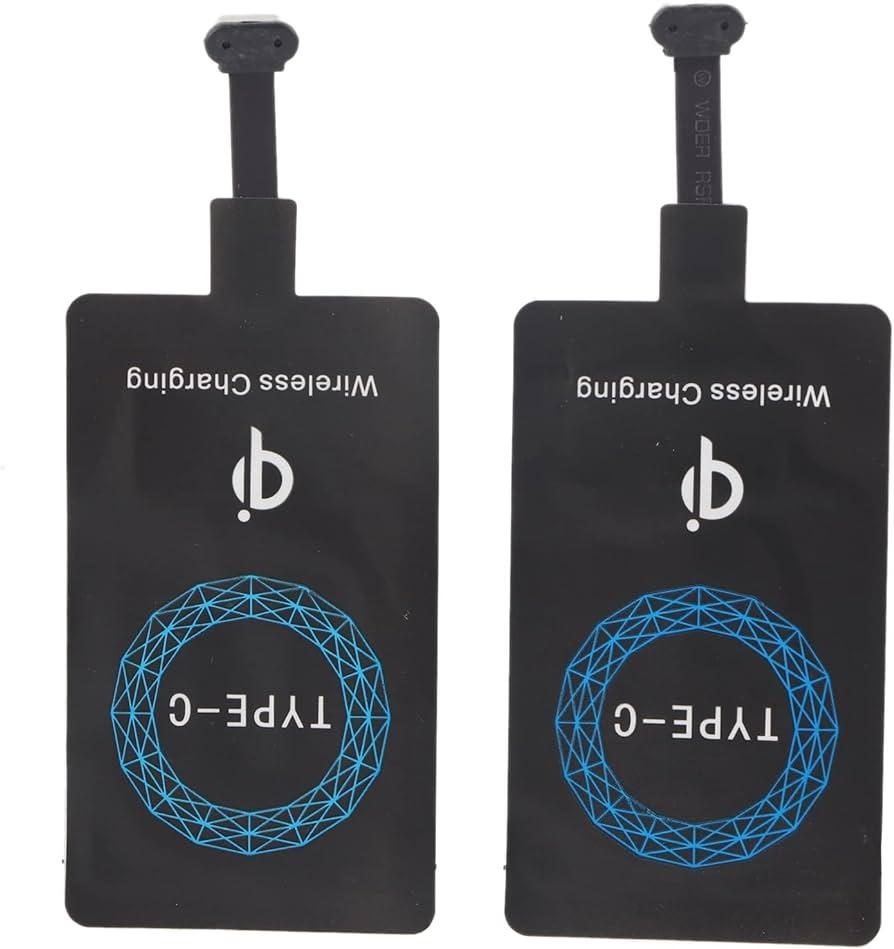Wireless charging technology has swiftly transformed from a futuristic concept to a widely-used reality. When it comes to this modern revolution in power transmission, one of the more prominent technologies is Qi Wireless Charging. As an established standard in the wireless charging industry, Qi brings to the table a dynamic blend of innovation and convenience. Yet, many are still unaware of the extent of its potential. In this comprehensive analysis, we aim to unravel the latent capabilities of Qi Wireless Charging Technology and shed light on its further prospects for catalyzing technological evolution in an increasingly wireless world.
Understanding Qi Wireless Charging Technology Explained
Qi wireless charging technology has simplified the way we fuel up our electronic devices. There are quality differences between non-Qi and Qi wireless charging, which makes the latter a popular choice among consumers. Efficiency, compatibility, and safety are some notable perks of Qi wireless charging technology.
The charging efficiency of Qi is remarkable. This technology uses electromagnetic fields to transfer energy between two objects. The charging pad contains a transmitting coil that generates an oscillating magnetic field, which induces a current in the receiving coil and eventually charges your device. Most importantly, Qi Wireless Charging is compatible with the majority of devices available in the market. From smartphones to smartwatches, Qi Wireless Charging provides a universal charging platform. It also boasts of the advantage of safe charging, meaning, it doesn’t emit any hazardous radiation.
- Efficiency: Qi wireless charging boasts of a charging efficiency of up to 80%.
- Compatibility: This universal charging platform is compatible with various devices, from smartphones to smartwatches.
- Safety: Qi charging does not emit hazardous radiation, thus making it a safe method for charging devices.
| Features | Description |
|---|---|
| Efficiency | Charging efficiency of up to 80% |
| Compatibility | Compatible with a majority of electronic devices |
| Safety | No emission of hazardous radiation |
Delving into the Technical Aspects of Qi Wireless Charging
Understanding the core technology behind Qi wireless charging is critical for those wanting to maximize its utilization. Essentially, it operates on the principle of inductive charging which depends on energy transfer between two objects via the use of coils to induce an electromagnetic field. It’s these energy waves that are then converted into electricity which powers up the device. With the Qi wireless charging standard set by the Wireless Power Consortium, users need not worry about differing protocols among various devices. As long as the devices support Qi standard, they can charge wirelessly within the Qi charging pad range.
Advantages of Qi Wireless Charging
- Universal Compatibility: One charging station can power up any device that supports Qi, regardless of the brand or model.
- Safety: Since it’s a no-contact method, it eliminates the risks of electric shock or damage to the device due to incorrect plugging.
- Convenience: There’s no hassle of untangling wires or losing charging cables. As long as the charging pad is connected, just place the device on it to start charging.
However, Qi wireless charging has a few challenges. The major drawback being the requirement of direct contact between the device and the charging pad, limiting mobility. Also, the charging speed of wireless chargers is usually slower than wired ones. Yet, advancements are continually being made to overcome these challenges and optimize the performance of Qi wireless charging systems. For instance, engineers are tackling the Qi specification to develop charging pads capable of charging multiple devices simultaneously, and active cooling technology to prevent overheating during charging.
| Features of Qi Wireless Charging | Benefits |
|---|---|
| Universal Compatibility | Can charge any device that supports Qi |
| Safety | No risk of electric shocks or damages |
| Convenience | Easy to use, tangle-free experience |
Examining the Efficient Use Cases of Qi Wireless Charging

In the increasingly connected digital era, the Qi wireless charging technology has emerged as a compelling solution for powering various devices. Predominantly used in smartphones, it has transformed the way we charge our devices, eliminating the need for tangled cables and providing the convenience of simply dropping your device on a charging pad.
It is worth noting that Qi wireless charging technology is not confined to smartphones alone. The realm of its applications extends to other electronic devices such as tablets, laptops, electronic toothbrushes, and smartwatches. The technology is also gaining traction in the automotive industry, with numerous car manufacturers integrating Qi charging pads into their vehicles’ interiors for seamless charging on the go. In addition, healthcare devices like hearing aids and medical implants are also leveraging the benefits of Qi charging.
- Smartphones: No need for cables; simply drop it on a charging pad.
- Tablets and Laptops: No more worries about forgetting your charger at home.
- Healthcare Devices: Easy charging solution for miniature devices like hearing aids and medical implants.
- Automotive Industry: Charge your device seamlessly while travelling in your vehicle.
| Device | Benefit |
|---|---|
| Smartphone | Convenient, cable-free charging |
| Tablet/Laptop | Dismisses the need to carry chargers |
| Healthcare Device | Facilitates the charging of compact devices |
| Automobile | Ensures seamless device charging while travelling |
The ise of the Qi wireless charging technology is indeed a big leap forward in powering mobile devices. However, it is not an overstatement to say that its potential applications and its ability to deliver power without the use of physical connectors can revolutionize a wide array of industries.
Realizing the Overlooked Limitations and Solutions of Qi Wireless Charging
Despite the surge in popularity Qi wireless charging is experiencing, it’s crucial to acknowledge that this technology, like any other, is not without its limitations. One of the primary downsides is that wireless chargers often operate at lower efficiency levels than their wired counterparts, leading to longer charging times. Moreover, they can’t charge through metal objects or cases, potentially requiring users to remove phone cases before starting the charging process. The inherent need for precise alignment between charging pad and device is another obstacle many users face regularly.
However, for most of these issues, solutions are already in development or available in the market. For example, coil design and semiconductor technology advancements are combating inefficiency and long charging times, leading to significant improvement in wireless charger efficiency. Innovations in charging pad technology allow for a degree of flexibility in device alignment, solving another frequent user gripe. While currently, Qi cannot charge through metallic cases, various phone case manufacturers are coming up with Qi-compatible cases that don’t hinder the wireless charging process.
| Problems | Solutions |
|---|---|
| Low Efficiency | Advancements in Coil design and Semiconductor technology |
| Need for precise alignment | Innovations in charging pad technology |
| Can’t charge through metal | Qi-compatible phone cases |
Providing Detailed Recommendations for Optimizing Qi Wireless Charging Use

As we delve further into the wonderful world of Qi Wireless Charging technology, it becomes increasingly important to unleash its full potential by optimizing its usage. Learning to correctly use your Qi wireless charger not only ensures efficient power transfer, but also maximizes the lifespan of your devices.
Start your Qi charging journey by correctly positioning your device. Ensure that your device is in direct contact with the charging surface to avoid unnecessary power loss. This is fundamental because Qi chargers use magnetic induction. Misalignments, no matter how minute, can decrease the charging speed quite significantly. Secondly, avoid charging on metallic surfaces. Metals can interfere with the magnetic field, leading to inefficient charging or even chargers overheating or devices shutting down.
Additionally, users should pay diligence to the thickness of their phone cases. Qi charging can manage phone cases, but only up to a certain thickness. Ideally, the case should not exceed 3mm, as charging capability drops steeply beyond this. If your phone case contains any metal, it’s smart to remove it completely before charging. Lastly, to optimize the life-cycle of your charging pad, remember to keep it clean – free from dust and debris.
| Suggestion | Description |
|---|---|
| Right Positioning | Ensure direct contact with the charging area |
| Avoid Metallic Surfaces | Metal can disrupt the magnetic field |
| Monitor Case Thickness | Max case thickness – 3 mm |
| Keep Charger Clean | Free from dust and debris |
Keep these recommendations to hand when using your Qi Wireless Charger to enjoy seamless charging performance. Tune in for more insightful guides and articles on Qi Wireless Charging technology.
To Conclude
In conclusion, the capabilities of Qi wireless charging technology continue to expand, showing remarkable potential in revolutionizing how we power our devices. While the technology may still have some obstacles to overcome, the advantages it brings are undeniable – from the convenience of charging wirelessly to the compatibility with a broad range of devices. As with any emerging technology, it’s essential to stay aware of its progress and developments. As Qi wireless charging continues to break barriers and surge forward in leaps and bounds, we wait with much anticipation and excitement for what the future holds in wireless charging solutions.





